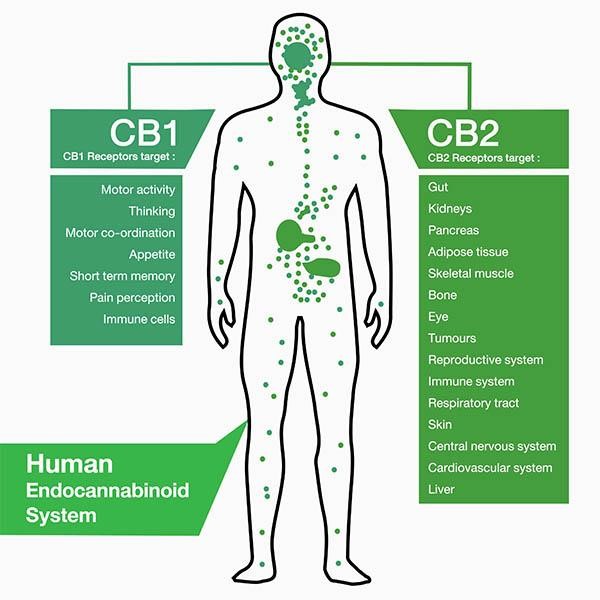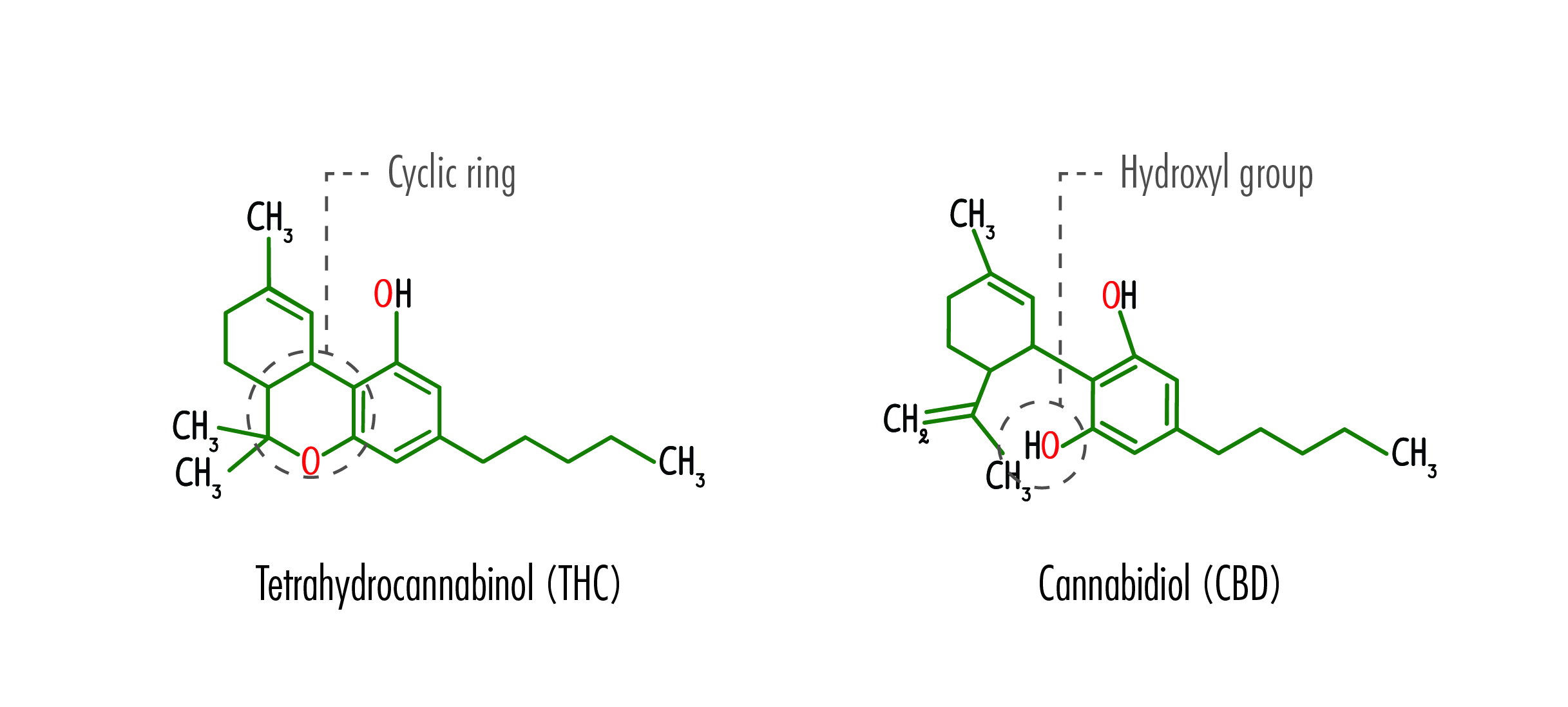Marijuana: Endocannabinoid System Explained
The ECS and their endocannabinoids act to modulate the release of neurotransmitters, regulate pain perception, interplay within the immune system, aid in the balance of metabolism and energy balance, and have a function in maintaining neuronal health and promotion of new neurons.

Author: Jarret Morgan, PharmD Candidate Class of 2026
Editor: Brentsen Wolf, PharmD
Among my personal favorite physiological systems are the endocrine and nervous systems. They actually have a lot in common! They're largely considered regulatory systems that keep a tight balance on homeostasis by sending “signals” across the body. This involves sensing and responding to stimuli, whether internal (releasing insulin in response to elevated blood glucose levels) or external (releasing thyroid hormones in response to cold weather).
A few easy similes to consider:
- The endocrine system is like mailing a letter. It takes a while to get your message where it needs to go.
- The nervous system is like a text message. Transmitting information is much faster.
Another similarity is the integration of negative feedback loops. In the case of thyroid hormones, excess T4 can inhibit the release of both thyrotropin-releasing hormone (from the hypothalamus) and thyroid stimulating hormone (from the anterior pituitary) which ultimately decreases your circulating T4 levels. In a sense, these two systems are like siblings. While we're discussing family, let's talk about a less commonly known cousin, the endocannabinoid system (ECS)! The ECS is more closely related to the nervous system's side of the family.
In this article I hope to give you a superficial introduction to the endocannabinoid system and its connection to cannabis!
Just like the nervous and endocrine systems, the ECS is largely a regulatory system that aims to maintain homeostasis. The endocrine system releases hormones, the nervous system releases neurotransmitters, and the ECS releases endocannabinoids. There are a myriad of respective cannabinoid receptors, though broadly these receptors are classified into two groups: CB1 receptors, predominantly found in the central nervous system, and CB2 receptors, primarily found in immune cells and peripheral tissues.

The ECS and their endocannabinoids act to modulate the release of neurotransmitters, regulate pain perception, interplay within the immune system, aid in the balance of metabolism and energy balance, and have a function in maintaining neuronal health and promotion of new neurons.
Not too surprisingly, cannabis produces cannabinoids too! Now these aren’t endocannabinoids, but phytocannabinoids. A few well-known phytocannabinoids include Delta-9-tetrahydrocannabinol (THC) and cannabidiol (CBD), and there are many others. Those familiar with SAR (structure-activity relationship) research wouldn’t be surprised to hear that these phytocannabinoids can interact within our own ECS and have an effect on our receptors.

Outside of cannabinol receptors, there are many other receptors expressed throughout your body, and many have been targeted for therapeutic benefit. For example, G protein-coupled receptors are very common receptors which many medicines interact with. Another good example is in mental health disorders where medicines modulate the concentrations of extracellular neurotransmitters like SSRIs (selective serotonin reuptake inhibitors). Remember that the ECS can modulate the release of neurotransmitters too!
The discovery and study of the ECS could pose landscape-changing effects in the future. In fact, THC has been shown to relieve pain, suppress nausea, and stimulate appetites. CBD is showing promise with anti-inflammatory effects, neuroprotective properties, and as an anti-anxiety agent among others. For example, dronabinol – a cannabinoid drug approved in 1985 for nausea and vomiting associated with chemotherapy - was also approved in 1992 for anorexia associated with weight loss in patients with AIDS. As stigma fades away, I hope the study of cannabinoids leads to improved patient outcomes, potentially offering new avenues for treating a wide range of conditions through targeted cannabinoid therapies.
Author Bio: Jarret Morgan is a 2nd year pharmacy student at the Southern Illinois University of Edwardsville and a part-time inpatient pharmacy technician at a local hospital. He aspires to one day attain a fellowship in the pharmaceutical industry where he can broaden his skillset and make a difference at the macro-scale. In his free time, Jarret enjoys exercising, playing sports/video games with his wife, and spending time with his grandfather.

*Information presented on RxTeach does not represent the opinion of any specific company, organization, or team other than the authors themselves. No patient-provider relationship is created.


